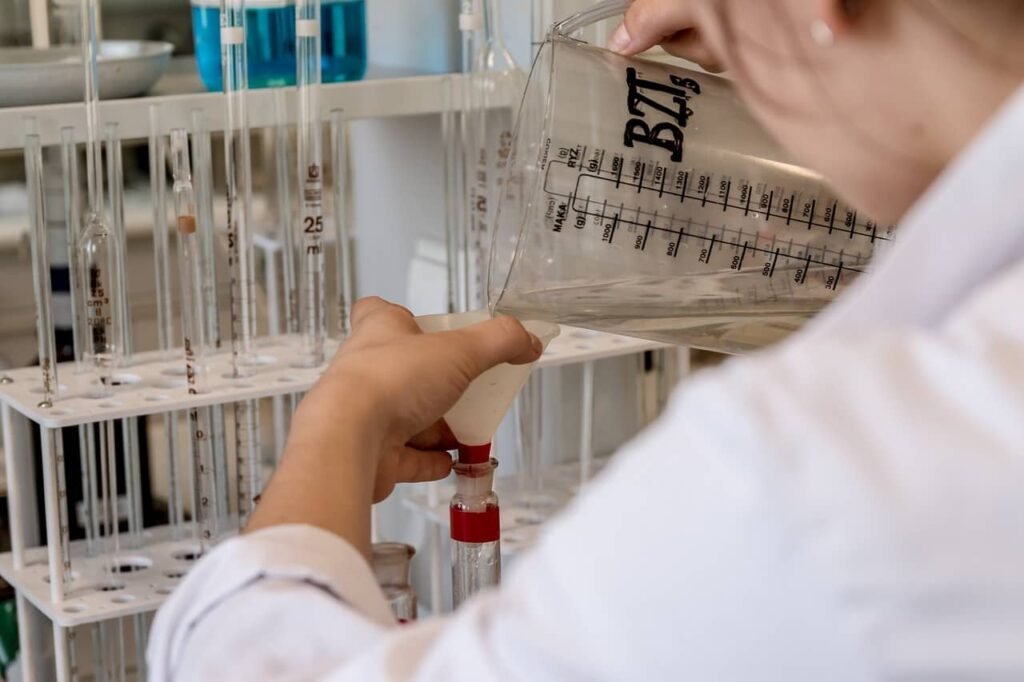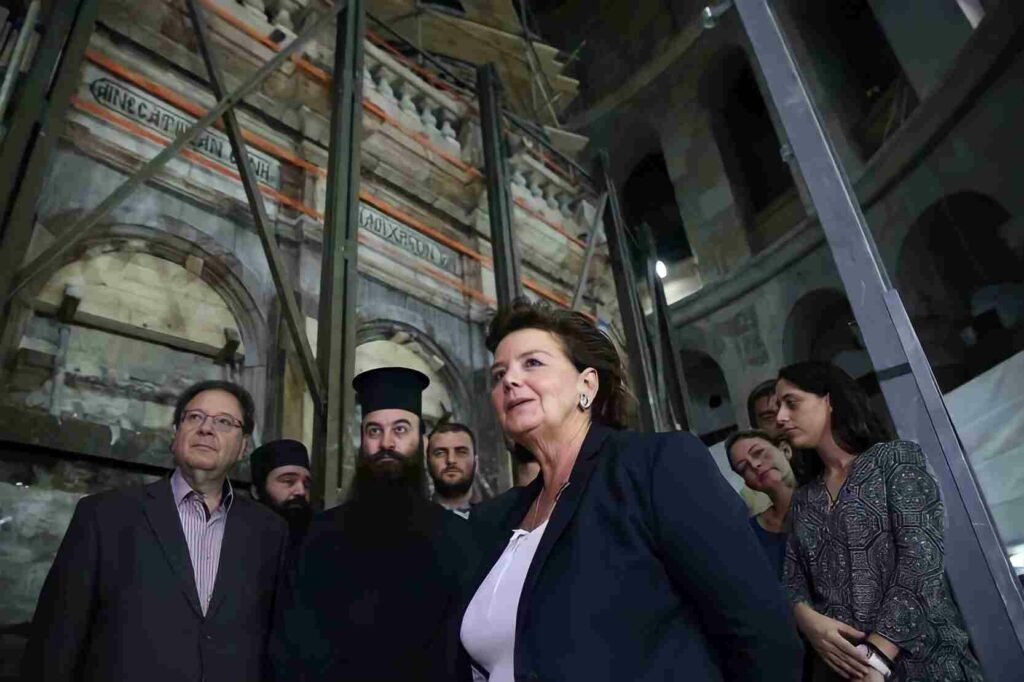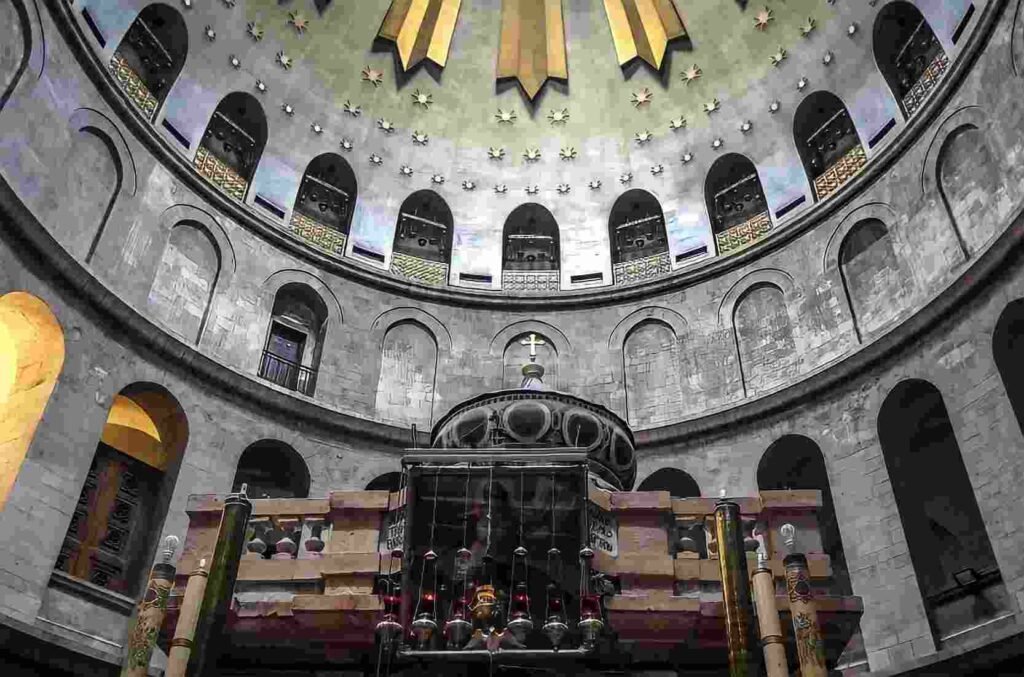More research was required.
A lengthy scientific analysis was required to determine the true date of the second marble. As a result, the excavation and restoration team took as many samples as possible from the burial chamber. The samples were taken to a lab and dated.

To determine when the samples were last exposed to light, an optically stimulated luminescence (OSL) process was used. This procedure would establish the exact date of the chamber. It took almost a year to get the results because it was such a complicated process.
The results are in.
The second marble slab, according to the findings, was last exposed to light in the fourth century. This was around the same time that Constantine built the first Church of the Holy Sepulchre. The analysis of the mortar sample from the tomb’s wall was also the same as the marble slab.

This was a huge development for the Athens excavation team and the monks who had the honour of being the first (and probably the last) humans to see the deepest part of the burial chamber anyone has seen in centuries, as it confirms the authenticity of the Church of the Holy Sepulchre’s Edicule.
A significant discovery
However, because the results took nearly a year to be released, the church’s restoration was already complete, and the burial chamber had been sealed. The marble slabs in the Edicule are unlikely to be opened again anytime soon.

However, dating the second marble slab was a significant enough breakthrough that it forever altered how scholars, historians, scientists, and archaeologists viewed the Church of the Holy Sepulchre, Christianity’s holiest site.

Leave a Reply